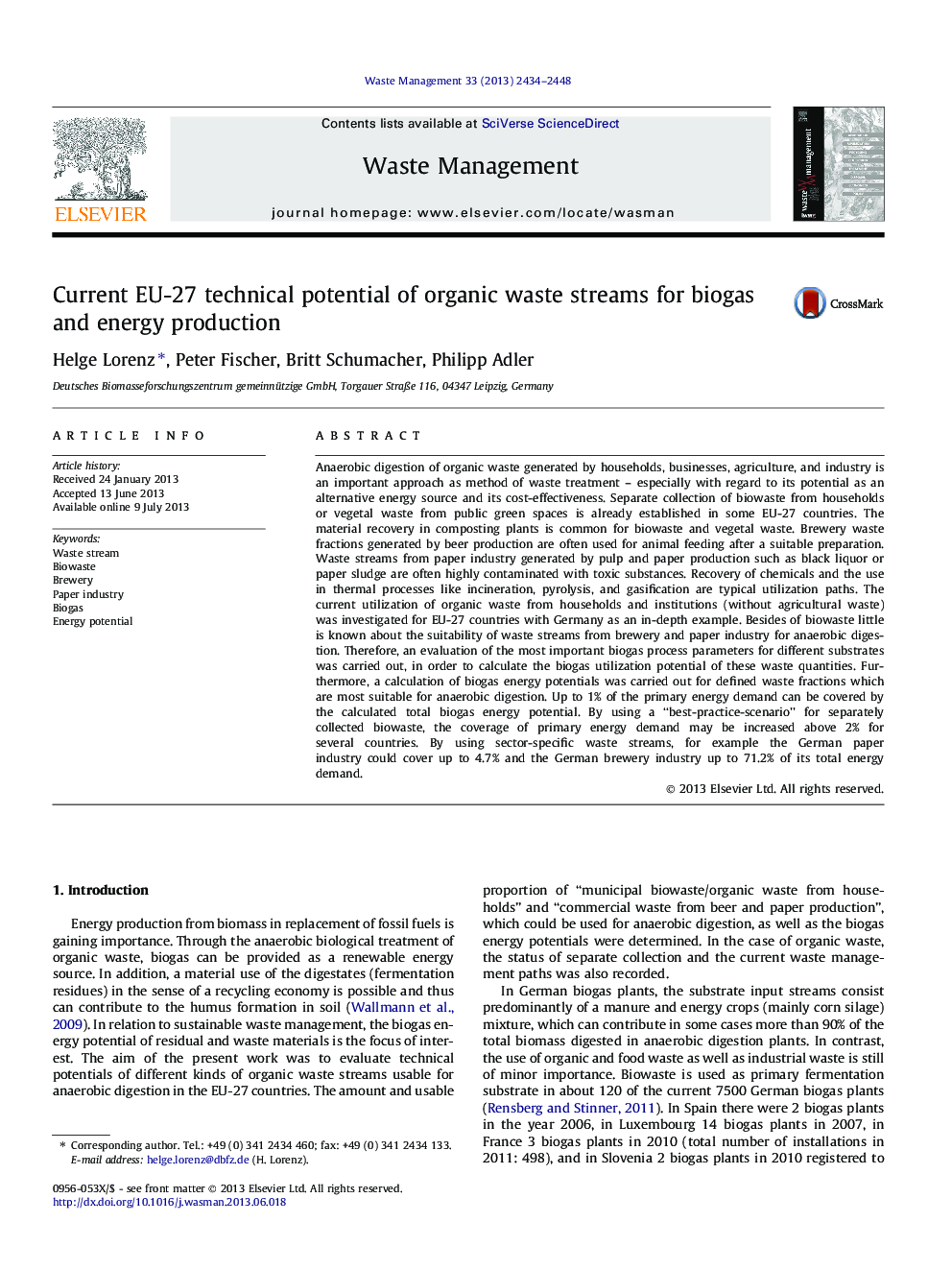| Article ID | Journal | Published Year | Pages | File Type |
|---|---|---|---|---|
| 4471727 | Waste Management | 2013 | 15 Pages |
•Current utilization of organic waste was investigated for EU-27 countries.•Quantities of waste from households, paper and brewery industry was calculated.•Important Biogas process parameters of suitable waste substrates were evaluated.•A calculation of biogas energy potentials was carried out for specified waste.•A biogas-based coverage of the respective industrial energy demand was evaluated.
Anaerobic digestion of organic waste generated by households, businesses, agriculture, and industry is an important approach as method of waste treatment – especially with regard to its potential as an alternative energy source and its cost-effectiveness. Separate collection of biowaste from households or vegetal waste from public green spaces is already established in some EU-27 countries. The material recovery in composting plants is common for biowaste and vegetal waste. Brewery waste fractions generated by beer production are often used for animal feeding after a suitable preparation. Waste streams from paper industry generated by pulp and paper production such as black liquor or paper sludge are often highly contaminated with toxic substances. Recovery of chemicals and the use in thermal processes like incineration, pyrolysis, and gasification are typical utilization paths. The current utilization of organic waste from households and institutions (without agricultural waste) was investigated for EU-27 countries with Germany as an in-depth example. Besides of biowaste little is known about the suitability of waste streams from brewery and paper industry for anaerobic digestion. Therefore, an evaluation of the most important biogas process parameters for different substrates was carried out, in order to calculate the biogas utilization potential of these waste quantities. Furthermore, a calculation of biogas energy potentials was carried out for defined waste fractions which are most suitable for anaerobic digestion. Up to 1% of the primary energy demand can be covered by the calculated total biogas energy potential. By using a “best-practice-scenario” for separately collected biowaste, the coverage of primary energy demand may be increased above 2% for several countries. By using sector-specific waste streams, for example the German paper industry could cover up to 4.7% and the German brewery industry up to 71.2% of its total energy demand.
